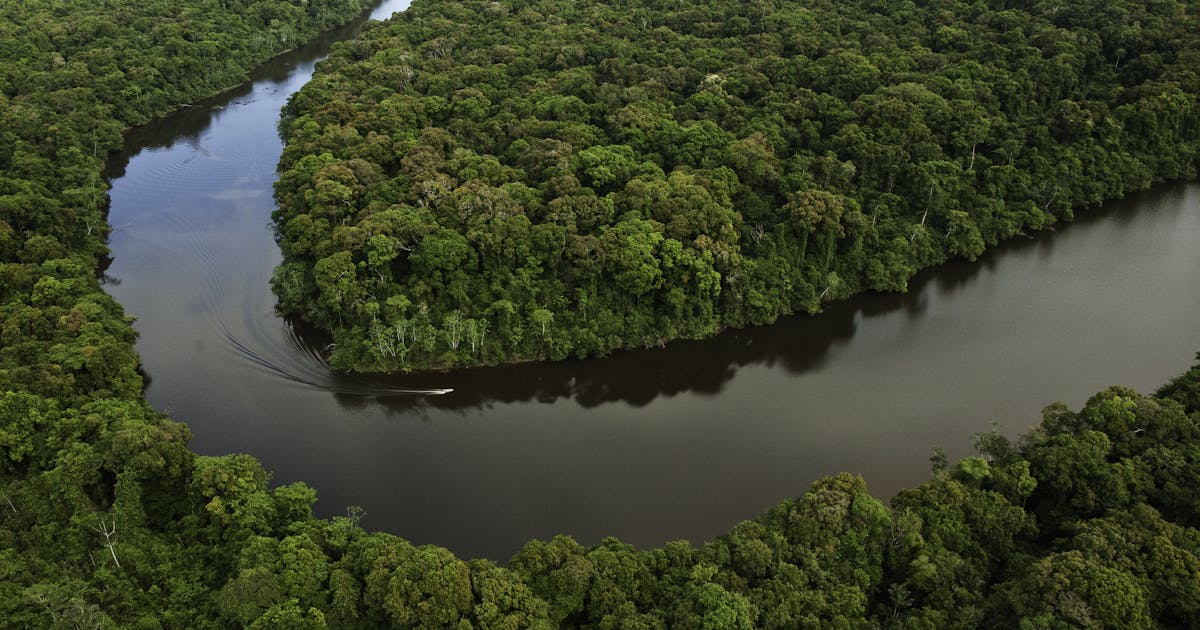One small South American country is making some giant steps for conservation.
At a recent Amazon summit, Guyana’s President Dr. Irfaan Ali announced that his country would double its protected areas within the next 18 months, local news reported.
Some 85 percent of Guyana is covered in forest, the second-highest percentage of forest cover of any country — with deforestation rates among the lowest in the world. In short, Guyana is a climate champion, storing nearly 20 billion tons of climate-warming carbon, according to government figures (the world emits about 50 billion tons of carbon a year).
At the same time, with the 2015 discovery and subsequent extraction of oil off its coast, Guyana is now the world’s fastest-growing economy. In an effort to avoid the “resource curse,” the Guyanese government has vowed to protect its irrecoverable ecosystems and has signaled to the world the economic value of nature.
Guyana’s transition will be closely watched as a model for other countries to follow, said Patricia Zurita, chief strategy officer at Conservation International, speaking to Guyana’s president at the 2024 Concordia Amazonas Summit: “You have a huge opportunity now to rewrite the way development happens.”
Guyana’s announcement at the summit is part of a “longstanding commitment by the government” to expand protected areas as part of its low-carbon development trajectory, according to Curtis Bernard, who leads Conservation International’s work in Guyana.
The move is also a step toward Guyana achieving its “30 by 30” goal — the protection of 30 percent of the country’s lands and waters by 2030, which scientists say is imperative for addressing the dual crises of biodiversity loss and climate change.
To support this goal, a new research and education center was recently launched at Sophia Point to help protect the country’s biodiversity and study the health of its ecosystems. The center aims to “focus research on answering the kinds of questions that are needed to support Guyana’s sustainable economic transformation with nature,” Bernard said.
It’s a transformation that’s been over a decade in the making.
Since 2010, Guyana has been pursuing a Low Carbon Development Strategy (LCDS), which leverages the value of its forests — and their associated carbon — to finance climate-resilient development and conservation in the country, said Guyana’s Senior Director for Climate and REDD+ Pradeepa Bholanath.
With a revised LCDS that now takes oil and gas into consideration, “Guyana is pursuing development of the sector more as a transitional path, rather than one on which the future economy will be based,” Bernard added.
“The intention is that the financial resources from the oil and gas sector would be used by the government to build out essential infrastructure for all sectors, support the diversification of the non-oil economy and expand livelihood opportunities at the community level,” Bholanath said. “These are all areas that are needed for Guyana’s sustainable future to be assured, and that’s what Guyana has really been working toward.”
Homegrown science
The new science facility, The Sophia Point Rainforest Research Centre, was officially opened in May — but the idea was born several years ago from UK Foreign Minister David Lammy, who is of Guyanese descent.
Lammy and British artist and co-founder of the center Nicola Green have long been interested in contributing to the country’s science, education and biodiversity. With support from philanthropists and partners, including the University of Guyana and Conservation International, the Sophia Point center became a reality.
Conservation International-Guyana and the Sophia Point center recently formalized their partnership to help build the capacity, research and knowledge to inform sound decisions for the conservation of Guyana’s biodiversity, Bernard said. And the work undertaken there will go beyond new scientific findings — it will focus on “decolonizing research,” he added.
“Historically, too often we have seen research done in the country and the results never make their way back to Guyana or are used to benefit Guyana’s development,” Bernard said.
Green added: “We at Sophia Point are delighted to partner with Conservation International-Guyana to collaborate on programs to conserve and better understand Guyana’s natural resources and unique biodiversity. Our partnership will work toward achieving our mission of transforming conservation and education in Guyana, and championing the Indigenous communities that have been guardians of the rainforest for generations.”
Bruno Vander Velde is the managing director of content at Conservation International. Want to read more stories like this? Sign up for email updates. Also, please consider supporting our critical work.
